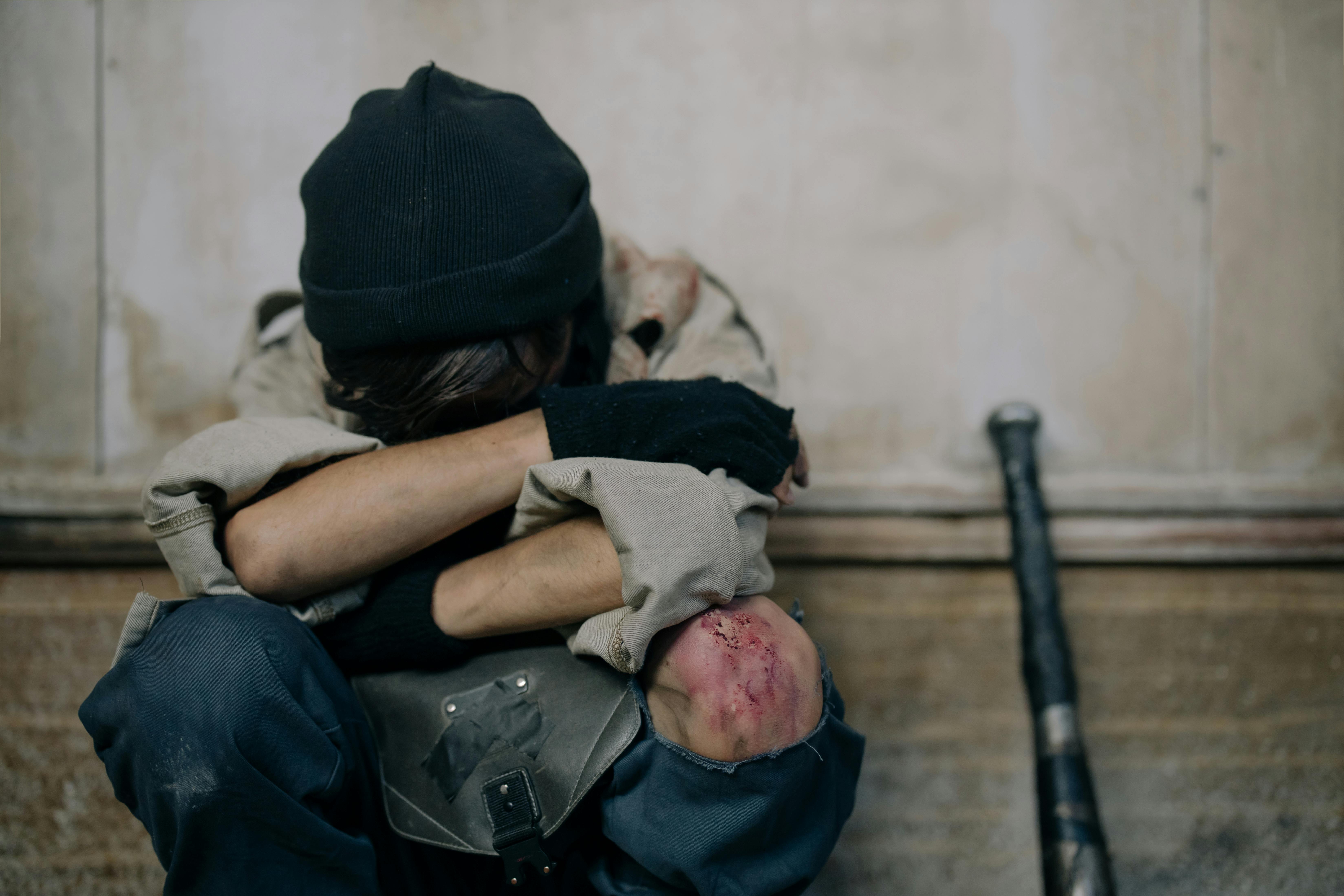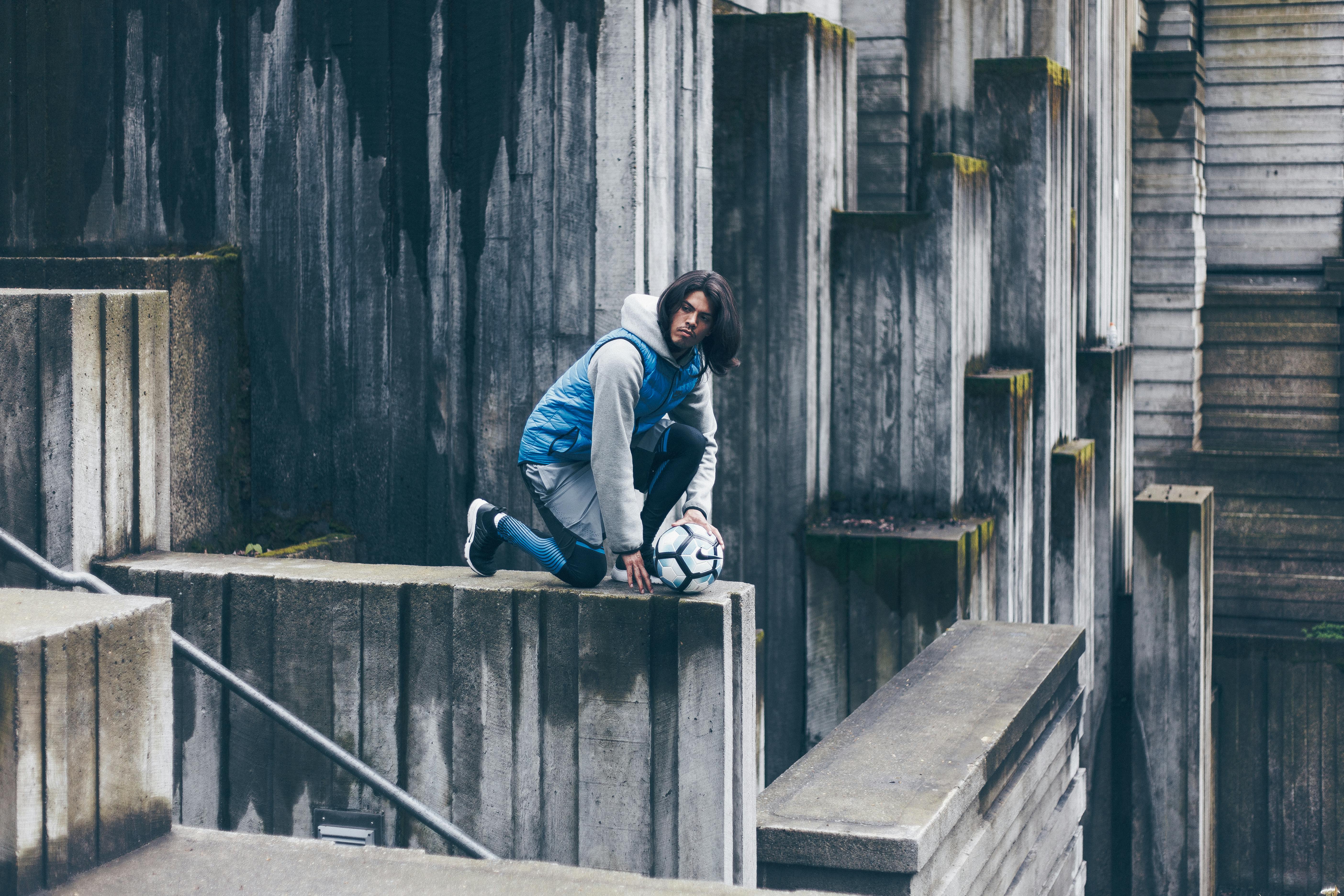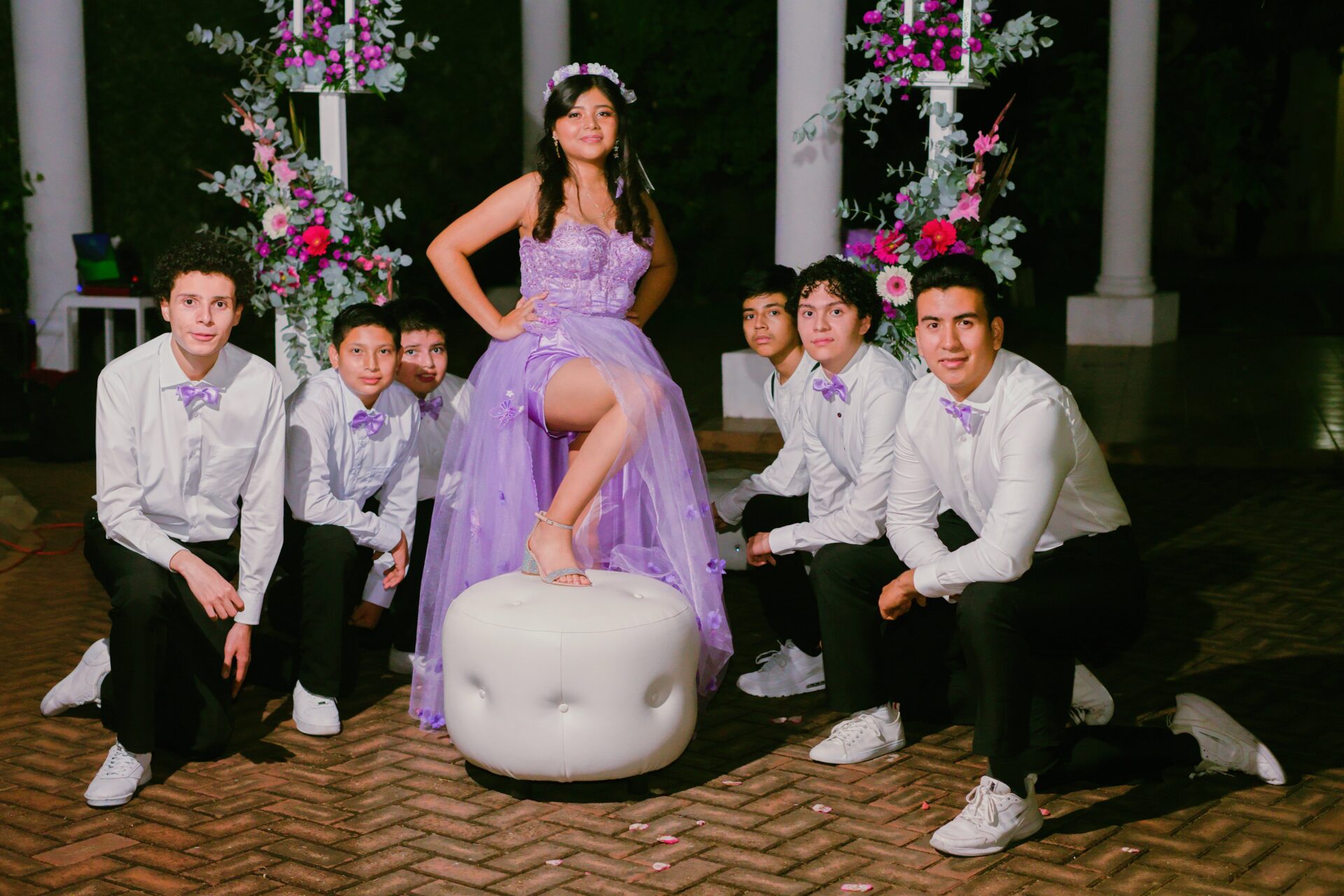The knee joint is one of the most complex joints in the human body, and understanding its structure is essential for optimal health and mobility. In this article, we will explore the structure of the knee joint and answer the question: Is it a ball and socket-joint/” title=”Is The Knee A Ball And Socket Joint”>socket joint? We will look at its anatomy, how it works, and how it differs from other types of joints. By understanding the structure of the knee joint, we can better appreciate how it allows us to move and use our legs.The knee joint is a complex joint in the human body that connects the thigh bone (femur) to the shin bone (tibia). It allows for movement of the leg and helps to support and stabilize the body. The knee joint is made up of three bones, ligaments, tendons, and muscles which work together to allow for movement in multiple directions.
Anatomy of the Knee Joint
The knee joint is one of the most complex joints in the human body. It is composed of three bones – the femur, tibia, and patella – and several ligaments, tendons, and muscles. The knee joint is responsible for bearing weight and providing stability and flexibility to the lower extremities.
Bones of the Knee Joint
The femur is the longest bone in the body and forms the upper part of the knee joint. It connects with the tibia, which is commonly referred to as the shinbone. The patella is a small bone located at the front of the knee joint that helps protect it from damage.
Ligaments
The knee joint contains four major ligaments that provide stability: anterior cruciate ligament (ACL), posterior cruciate ligament (PCL), medial collateral ligament (MCL), and lateral collateral ligament (LCL). The ACL runs diagonally across the knee joint from front to back, while PCL runs in opposite direction from back to front. The MCL runs along inner side of knee while LCL runs along outer side. These four ligaments are essential for proper functioning of knee joint and any injury or damage can lead to instability or even complete dysfunctioning of knee joint.
Tendons
The tendons connecting muscles to bones play an important role in providing stability at the knee joint as well as helping with movement. Tendons attach muscles to either side of kneecap and help move it up or down when leg moves forward or backward respectively. Some major tendons around knee are quadriceps tendon, patellar tendon, semitendinosus tendon, gracilis tendon etc. which helps with flexion and extension movements at this joint as well as stabilizing it during movement.
Muscles
Muscles surrounding knee joint are also important for its proper functioning and stability when performing different activities like running, jumping etc. Quadriceps muscles on front side of thigh are responsible for straightening leg while hamstring muscles on back side are responsible for bending leg at this joint. Other smaller muscles like gastrocnemius muscle help with movements like walking or running by controlling amount of pressure they create on kneecap during these activities.
Muscles Supporting the Knee Joint
The knee is a complex joint that supports the movement of the lower body. It is supported by a range of muscles that help to move and stabilize it. These muscles include the quadriceps, hamstrings, calves, and gluteal muscles. The quadriceps are located at the front of the thigh and consist of four individual muscles: rectus femoris, vastus lateralis, vastus medialis, and vastus intermedius. These muscles work together to extend the knee joint and straighten the leg.
The hamstrings are located at the back of the thigh and consist of three individual muscles: biceps femoris, semitendinosus, and semimembranosus. These muscles work together to flex or bend the knee joint and also help to rotate it inwardly. The calves are located at the back of the lower leg and consist of two individual muscles: gastrocnemius and soleus. They help to flex or bend the knee joint as well as support it when walking or running.
Finally, there are several gluteal muscles located around the hip area which help to stabilize and move the knee joint in different directions. These include gluteus maximus, gluteus medius, gluteus minimus, piriformis, tensor fasciae latae (TFL), obturator internus/externus, pectineous muscle group (pectineous major/minor), gemelli (superior/inferior) among others. All these muscle groups work together to provide support for movement at this important joint.
Overall, these various muscle groups work together to enable movement at this complex joint while also providing stability for normal everyday activities such as walking or running. Without their support our movements would be limited and we could not perform basic tasks such as standing or walking effectively.
Bursae of the Knee Joint
The knee joint is composed of several different bursae that are located between the bones, ligaments, and tendons. Bursae are sacs that contain a small amount of lubricating fluid to help reduce friction between these structures. The bursae around the knee joint include the suprapatellar bursa, prepatellar bursa, infrapatellar bursa, pes anserinus bursa, and deep infrapatellar bursa.
The suprapatellar bursa is located above the patella (kneecap). It helps to reduce friction between the quadriceps tendon and the femur (thigh bone). The prepatellar bursa lies in front of the patella and helps to reduce friction between it and overlying skin. The infrapatellar bursa is located below the patella and helps reduce friction between it and the tibia (leg bone).
The pes anserinus bursa is located at the insertion point of three hamstring muscles on the tibia. It helps to reduce friction between these muscles and the tibia. Finally, there is a deep infrapatellar bursa, which lies deeper than all other knee joint bursae. It helps to reduce friction between structures in this area as well as support them when under tension.
In summary, there are five distinct knee joint bursae which help to reduce friction between different structures in this area. They are important for maintaining smooth movement of this joint and preventing damage due to excessive rubbing or wear-and-tear caused by repetitive motions.
Ligaments of the Knee Joint
The knee joint is one of the most complex joints in the human body. It is stabilized by four different ligaments, which are responsible for providing stability and flexibility to the joint. The four ligaments that help to support the knee joint are: medial collateral ligament (MCL), lateral collateral ligament (LCL), anterior cruciate ligament (ACL), and posterior cruciate ligament (PCL).
The medial collateral ligament (MCL) runs along the inside of the knee joint, from the femur to the tibia. It helps to keep the knee from bending too far inward, and also helps to protect it against twisting injuries.
The lateral collateral ligament (LCL) runs along the outside of the knee joint, from the femur to the fibula. It helps to keep the knee from bending too far outward, and also helps to protect it against twisting injuries.
The anterior cruciate ligament (ACL) is located in front of the tibia and runs diagonally across it. Its main function is to limit forward movement of the tibia relative to femur and provide rotational stability to knee joint.
The posterior cruciate ligament (PCL) is located at back of tibia and runs diagonally across it. Its main function is to limit backward movement of tibia relative to femur and also provides rotational stability for knee joint.
In summary, these four important ligaments work together in order to provide an effective support system for your knee joint so that you can move freely and with confidence without fear of injury or instability.

Range of Motion in the Knee Joint
The knee joint is a hinge-type joint that allows for movement in two major planes. The knee joint has a wide range of motion, which allows us to perform various activities such as walking, running, climbing stairs, and squatting. The range of motion in the knee joint can be divided into three categories: flexion, extension, and rotation. Flexion refers to the amount of bend in the knee joint and is measured in degrees. Extension refers to the amount of straightening in the knee joint and is also measured in degrees. Rotation refers to the amount of twist or turn that can occur at the knee joint and is measured in degrees as well.
The maximum range of motion for flexion is 140-150 degrees, with 100-110 being considered normal. For extension, the maximum range of motion is 0-10 degrees with 0 being considered normal. For rotation, the maximum range of motion is 70-80 degrees with 20-30 being considered normal.
It is important to maintain good range of motion in order to perform activities without restriction or pain. Stretching and strengthening exercises are important for maintaining proper range of motion as well as reducing pain associated with arthritis or injury. It is also important to talk to your doctor if you experience any pain or difficulty with movement as this could be an indication that something more serious may be going on.
Is the Knee a Ball and Socket?
The knee joint is a complex hinge joint that allows for the flexion and extension of the lower leg. It consists of three bones: the femur (thigh bone), tibia (shin bone), and patella (kneecap). The knee is usually thought of as a hinge joint, but it does have some characteristics of a ball-and-socket joint. The femur has a rounded end that fits into the concave tibia to form a pivot point. This allows for some rotation in addition to flexion and extension.
The patella, or kneecap, is at the front of the knee and functions as a protective shield for the joint itself. It also helps to distribute forces across the knee and increase stability while bending or straightening it. The patella slides along with the femur in its groove as it moves up and down, adding to its stability.
While not technically considered a ball-and-socket joint, there are certain aspects that make it similar. The rounded end of the femur fits into the concave tibia to act as an axis around which rotation can occur. In addition, the presence of the patella adds stability which allows for more movement than just flexion and extension alone.
Overall, while not strictly classified as one, there are certain aspects of ball-and-socket joints present in the knee that give it increased range of motion compared to other joints.
Advantages of a Ball and Socket Knee Joint
A ball and socket knee joint provides a wide range of motion, allowing the leg to move in any direction with ease. This type of joint also increases stability, as it can bear higher loads than other types of knee joints. It also provides greater flexibility as the joint can be adjusted to fit different sizes and shapes of leg. Furthermore, the ball-and-socket design also reduces wear and tear on the joint due to its ability to absorb shock. This helps to prolong its life and reduce the chance of long-term damage due to overuse or injury.
Disadvantages of a Ball and Socket Knee Joint
The main disadvantage of a ball and socket knee joint is that it is not as strong as other types of knee joints. As such, it may not be suitable for activities that involve heavy lifting or running. Additionally, this type of joint is more prone to dislocation than other types, which may require medical attention for proper treatment. Finally, due to its size and complexity, this type of joint may be more difficult to repair if damaged.

Conclusion
The knee joint is a complex, multi-faceted hinge joint that plays an essential role in enabling us to move. It is made up of three bones and several ligaments, tendons, and cartilage. Although it has been traditionally described as a ‘ball and socket’ joint, this is not entirely accurate. Instead, the knee joint has a more complex anatomy that allows for a greater range of movement and stability than a simple ball and socket joint. The various components work together to create a highly efficient system that allows us to move in many directions with great precision.
Understanding the structure of the knee joint is essential for athletes and those with knee injuries to be able to properly assess their condition and receive the proper treatment. Knowing how the different parts contribute to its function can help us to identify potential problems before they become serious, as well as find more effective ways to treat existing injuries or conditions.
In conclusion, it is clear that although the knee joint has been traditionally described as a ball and socket structure, its complex anatomy reveals it is much more than this. Its multiple components work together to give us an incredible range of motion while still providing stability and support. By understanding the structure of this important joint we can better protect ourselves from injury or better understand existing conditions in order to find effective treatments.




